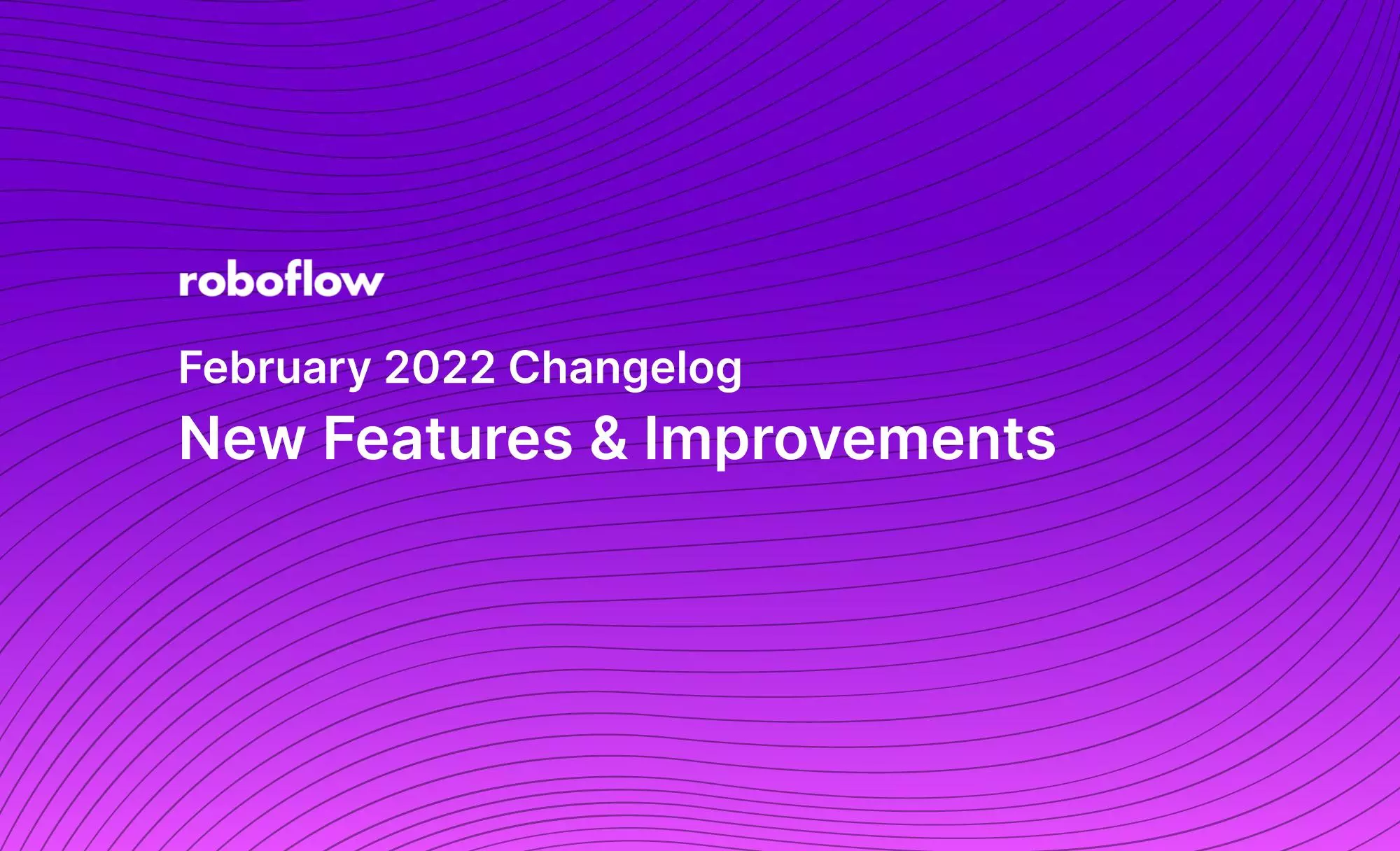Even though it's the shortest month of the year, we accomplished a lot! Each month, we share a recap of product and company updates; if you missed last month's edition of the Roboflow Changelog, you can find it here.
Roboflow Organize
- Polished and improved the new collaborative annotation workflow
- Improvements to tutorial & invitation flow
- Inference Widget is now available to use on trained versions of your datasets
- Enabled annotation via API to work with new annotation flow
Roboflow Train and Deploy
- Released an improved model for Roboflow Train
- You can now select whether you want to optimize for Speed or Accuracy when training
- Our REST API & PIP package can now access public projects from Universe
- Improved Server Benchmark repo to use the API for dataset loading and calculate mAP
Roboflow Universe
- Enhanced loading speed
- Improved auth and inference flow for logged out users
- Added a form to request specific projects be created or added
Other
- Launched the Roboflow Forum (join for great Roboflow and computer vision discussion daily!)
- Product team traveled to Minneapolis to do Q2 planning.
- Sales team had an on-site in Salt Lake City for training.
- Attended ProductCon.
- Added 2 new team members.
- Opened several positions in marketing and engineering (come help us democratize computer vision!)
- Improved our internal process for reporting and communicating bugs
- 28 bug fixes
- 4 new Universe projects
- 6 blog posts
- 1 YouTube video
- Featured in/by: YC Top Companies, Science Direct, Martian Chronicles, Tweet from CPO of Adobe, Nakashima, Mohammed Ismail
- User projects: Counting Teslas, Thermal Images, Detecting and Counting Bacteria, Deep Learn Me, Deep Learning-Based Object Detection and Scene Perception under Bad Weather Conditions, Suspicious Object Detection in Environments with Tear Gas, Computer Vision with Deep Convolutional Neural Network Approach for Cold-Flow Casting Defect Detection, A Pipeline Approach to Context-Aware Handwritten Text Recognition, A Novel Road Maintenance Prioritization System Based on Computer Vision and Crowdsourced Reporting, DRONET: Multi-Tasking Framework for Real-Time Industrial Facility Aerial Surveillance and Safety, Localization and Edge-Based Segmentation of Lumbar Spine Vertebrae to Identify the Deformities Using Deep Learning Models, Object Detection on Custom Dataset in 3 Simple Steps Using YOLOv5

